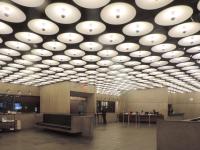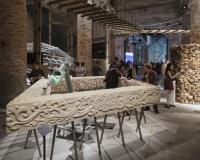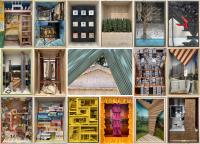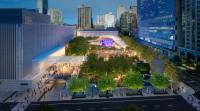Healing the City
Lima, Peru
Exploring the Spatial Determinants of Tuberculosis in the Slums of Lima
The research outlines the possible relations between spatial characteristics and Tuberculosis transmission factors on habitable spaces of affected dwellers in two different slums of Lima. An integrated intervention in the built environment is proposed to tackle specific risk settings, reduce transmission, and improve the health of slum dwellers.
Tuberculosis is the top infectious disease killer worldwide. In the Americas, the second-highest incidence of TB is found in Peru, which concentrates most of its cases in Lima. Coincidently, TB cases are clustered in neighborhoods with low socioeconomic status, poor housing quality, and deficient access to services. While social housing has little relevance in the local discussion, current plans for epidemic control -to reach the goal of ending TB by 2035- are strongly focused on biomedical strategies that seem to be ineffective in reducing prevalence. Further challenges of rapid urbanization and external events could worsen the problem if no bolder measures are taken by the actors involved.
This research intended to profile specific determinants, which play an essential role in the transmission of TB in endemic slums, through the exploration of spatial characteristics in the affected households associated with factors and scientific evidence of high transmission settings. The study was conducted in two neighborhoods which are endemic areas of TB, shaped after different informal urban development processes: ‘Barrios Altos’ and ‘San Cosme’ Hill. Despite the essential differences in their urban forms and historical backgrounds, these neighborhoods are taken as representative samples of the diverse urban morphology of the slums in Lima. Direct relations of physical conditions with exposure and environmental factors for transmission are outlined, and specific high-risk settings in dwellings and collective housing buildings -and the possible influence of the urban form- are pointed out, warning that external future stresses could worsen the situation. The over densification of dwellings and housing clusters are the side effects of decades of self-help-based and market-driven social housing policies, which did little to even health statuses in Lima. General solutions for the epidemic are proposed through physical upgrading, implying that improving such conditions could have potential benefits for residents' health. Modifications and new projects in consolidated slums could include three basic attributes for healthy environments: sunlight, ventilation, and space. However, other considerations should be taken for less-consolidated endemic slums, requiring further research with a comprehensive recognition of their realities. Any intervention to improve health would require changes in the current urban planning approach, urban policies, and actions to achieve socio-economic development. The thesis concludes that multi-level and multi-sectoral integrated development strategies are needed towards the construction of healthier neighborhoods in Lima, avoiding hygienist postures, forced evictions, and gentrification, to finally end the burden of TB.











